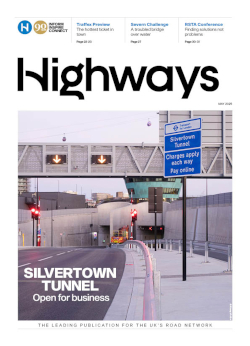One of the Government's leading authorities on Connected and Automated Vehicles has told a meeting of industry professionals in London that Britain stands as a world leader in the technology.
Sevvy Palmer, who is head of data and analysis at the Centre of Connected and Autonomous Vehicles at the Department for Transport told the PTV UK and Ireland User Group meeting that the Government is heavily involved in the technology because of the potential to improve safety, traffic flow and accessibility.
In his keynote speech to the meeting he quoted the CEO of General Motors, Mary Barra, as saying that the auto industry will change more in the next five years than it has in the last 50. 'If she says the next five years are going to change, it's pretty profound ' we really are on the cusp of a revolution,' he explained, "CAVs will transform mobility in our lifetimes. It genuinely feels like we are shaping the future. This is a tremendous opportunity, no matter how you look at it, to do things better than we have in the past."
And he added that we should treat surveys about public perception of the technology with caution 'They all seem to say different things,' he explained, "but that's because, when it comes to the technology, people haven't seen it, felt it, used it yet."
Palmer explained that the UK is considered to be extremely advanced in the CAV industry. We have world-class companies, great R & D backed by the Government, and that there is a growing realisation in the USA that we are moving ahead, he said.
He explained his view that the likely initial adoption will be for shared ownership, rather than people having their own driverless vehicle, based on the cost of the technology and the fact that the average private vehicle is unused 96% of the time.
He gave his personal view that the 'writing is on the wall' for buses because they, as a mode of transport, fulfil a role now which could be superseded by CAVs because they could be cheaper and more flexible for users. 'Think of a CAV as a really cheap taxi,' he said. However he did acknowledge that rail will be used for the foreseeable future, mainly because of the capacity they provide in urban areas and the speeds which they can achieve on longer journeys.
He then told the PTV clients and customers of his analytical framework's three priorities. First was the business case for government to be involved in this technology, the rational for government intervention and also policy decisions to make, because he believes there is a clear cost to government inaction. The second reason is analysis to underpin regulatory policy and the third is the long-term social and economic impact of the technology, which he said is the hardest to produce solid evidence to inform policy. He explained that the DfT has to be able to show how its investments make sense under a number of different scenarios, and for this modelling is required.
He pointed to the work PTV has already been involved in when it comes to understanding the impact of CAVs. He said work by the International Transport Forum suggested that urban mobility using CAVs will involve far, far fewer cars if people are willing to share their vehicles. He said the modelling showed the volume of travel increased, but the needs for public transport diminished as CAV use grows.
And he explained to that there is a great need for transport modelling in this market, the insights that the analysis produces is so useful for making policy decisions, even down to simple decisions such as the need for motorway gantries which may become unnecessary within their design life, or what the impact will be on traffic and whether we need more capacity. He added the modelling can also be used for assessing likely environmental impact and overall energy usage.
"Many different sectors, including for instance local authorities, are asking what is happening with CAVs,' he said, "we need scenarios to help understand the uncertainty, which opens modelling opportunities. It could lead to a profound change to transport in urban centres. Similarly, parking requirements could completely change with CAVs."
PTV UK's Managing Director Paul Speirs says he's encouraged by the comments. "I guess the key here is the DfT is asking all the right questions," he said, "and the industry is setting itself up to answer and bring solutions to those questions - none more so than PTV."
The PTV User Group Meeting in London brings together experts from a range of professions from the public and private sectors, including planners and engineers, economists and the automotive industry. It is designed to share best practice among users of PTV's modelling software, with presentations and discussions mainly led by the company's clients with the aim of shaping a common vision for the future of mobility in the UK, Ireland and worldwide.





